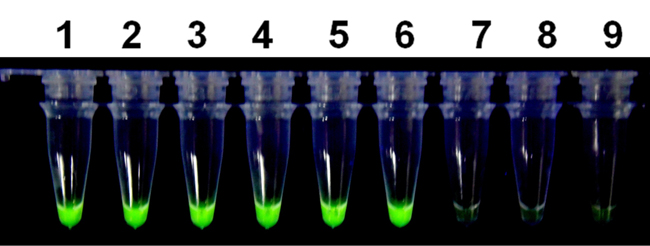Innovative techniques
Taiwan’s annual export value of vegetable seeds reaches nearly NT$3.6 billion (US$120 million). For watermelon seeds alone, the export value is about NT$200 million. Recently, most of the importing countries require disease free certification statements to be included with the imported vegetable seeds. In this connection, the establishment of the certification system requires disease diagnostic techniques that are sensitive, reliable, and simple. Through the effort of TARI scientists in the past three years, several novel nucleic acid detection methods that are capable of diagnosing an increasing number of crop diseases have been developed by employing modern biotechnology tools. These new powerful molecular diagnostic techniques will further enhance the competitiveness of Taiwan’s seed industry in the global market.
TARI’s new rapid molecular diagnostic techniques are based on the improvement of the specificity and efficiency of polymerase chain reaction (PCR). By employing a specific PCR reaction temperature, the techniques can be used to precisely detect different diseases on different crops. For example, one hour after thoroughly mixing suspected virus-infected specimens with specific target/primer set for a specific viral disease, the color reaction identified by eyes is used to determine the presence of the targeted virus. The fluorescent green indicates the presence of a specific virus in the host plant; the absence of the color indicates that the test plant is free from the specific virus. In addition to viral diseases, the techniques can also be used to detect bacterial and fungal diseases. The newly developed molecular diagnostic techniques have several comparative advantages over the conventional techniques as follows: (1) High accuracy: Accuracy reaches 100% with confirmed symptomatic plants, whereas some non symptomatic plants are tested with the presence of viruses. (2) Short reaction time: Results are obtained after 60 minutes of the improved PCR testing, whereas the conventional PCR requires150 minutes of reaction time and an extra electrophoresis setup. (3) High sensitivity: The new method is ten times more sensitive than the conventional method. (4) Low cost: The new method does not need sophisticated equipment.
Because of their sensitivity, in addition to seed health tests, the very molecular diagnostic techniques can also be employed in the selection of disease resistant lines, field monitoring of crop diseases, or early diagnosis of latent infection. The future perspectives of new techniques are to establish the service platform for the seed industry, and development and mass production of test reagents to reduce the cost of testing.


